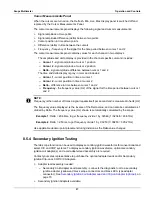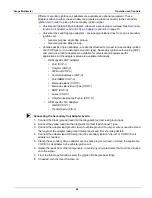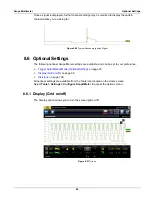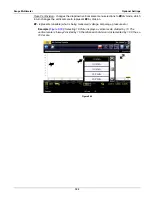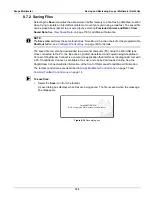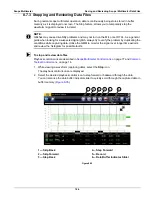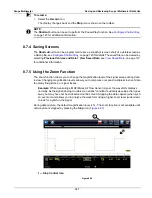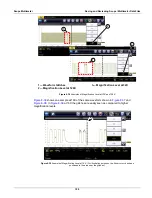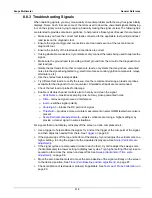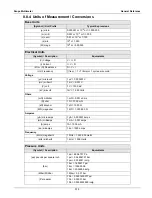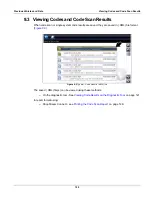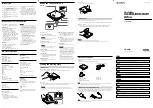
111
Scope Multimeter
General Reference
As a default setting, trigger is normally off. The scope/meter uses internal circuitry to display a
signal if present. However, in certain circumstances additional channel adjustments may be
required, or the trigger mode may have to be turned on, for a signal that is present but is not
displayed. You may also need to readjust the vertical scale if set to low, in order to bring the signal
into the viewable display area.
At this point you should have a visible signal on the screen. An ideal signal should be displayed
within the area of the display.
•
If the signal goes beyond the top and bottom of the display, try and readjust the vertical scale
to a higher setting, to bring the signal into the viewable display area.
Use the zero baseline controls or move the zero baseline marker onscreen to move the zero
baseline of the signal vertically on the screen to the desired position. See
•
If the signal cycles are compressed (close to each other), try and readjust the sweep scale
(horizontal scale) to a lower setting to display less cycles.
Once you have a usable signal displayed, if needed use the trigger function to stabilize a changing
or erratic signal (a signal that may flicker or drift), so that it is easier to view. Try and set the trigger
at the mid-point of the signal, and then adjust as needed from there. See
As all signals are different, and due to other variables, additional adjustments may be needed to
get the signal displayed exactly how you need. Review the channel settings section in this manual
for additional information on using the settings. See
At this point you should have a signal displayed that will allow you to see the overall signal
characteristics, and allow you to begin your diagnosis.
Comparing your captured waveforms to known good waveforms, can be a time saver and provide
supporting evidence when trying to determine a fault. See
page 111 for additional information.
8.8.2 Using Known Good Waveforms
In some cases captured waveforms may not provide enough information to determine if a
suspected sensor or circuit is at fault. Comparing the test vehicle waveforms to known good
waveforms, can help to provide supporting evidence when trying to determine a fault.
Known good waveform examples may be available from different sources including the Guided
Component Tests function, or from other sources.
As good practice, capturing waveforms before and after the repair will help you to build your own
library of waveforms for future troubleshooting.
Содержание Modis Ultra
Страница 1: ...User Manual EAZ0079L23C Rev B 1 H 18 UK ...

